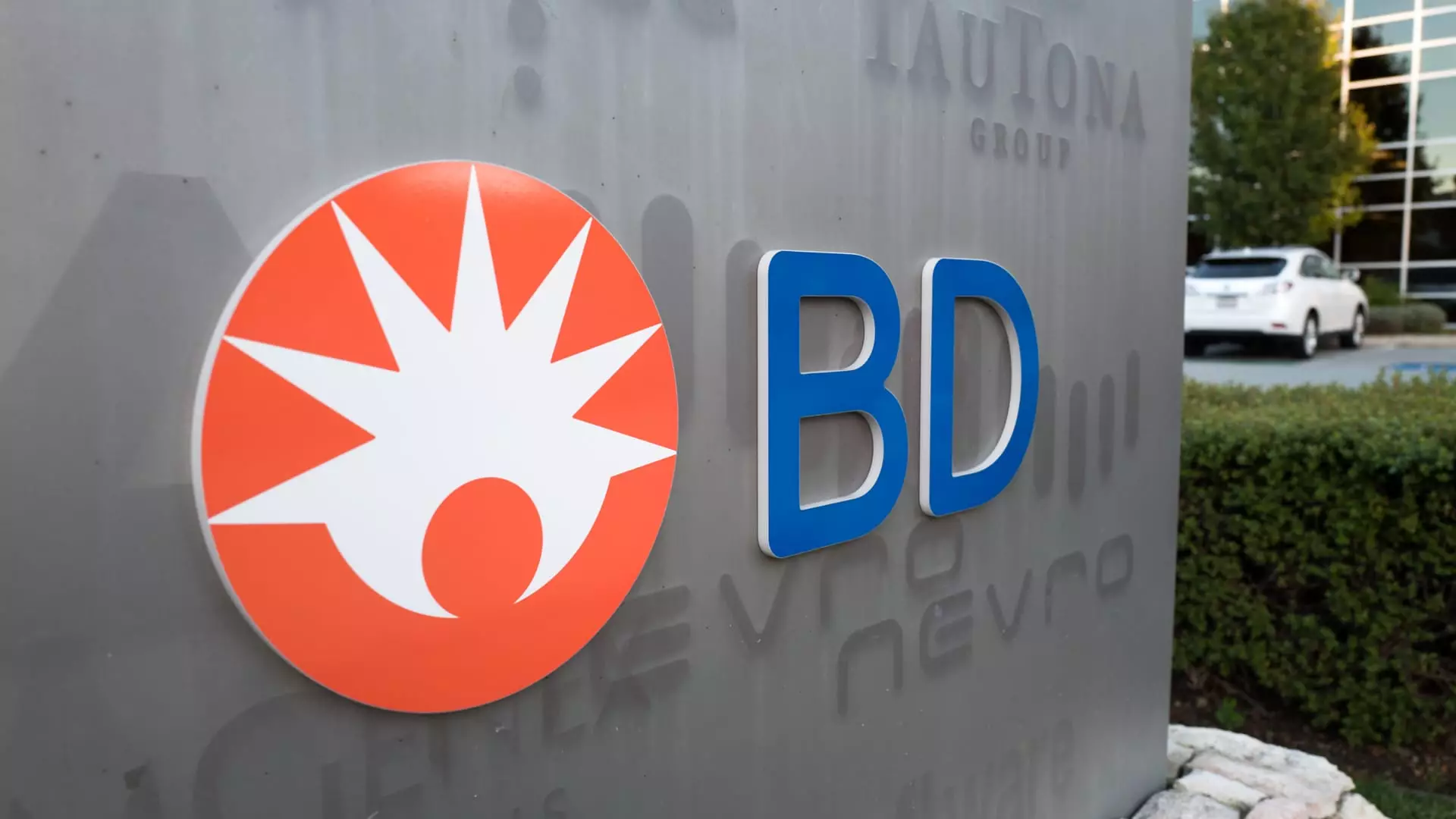Becton Dickinson (BDX) stands as a pivotal player in the medical technology industry, specializing in the development, manufacturing, and sale of an extensive range of medical supplies, devices, and diagnostic products. It serves a diverse clientele that includes healthcare institutions, individual healthcare practitioners, and researchers across life sciences. With an impressive market cap nearing $66.65 billion, BDX operates in an environment characterized by rapid innovation and stringent regulatory oversight—a dynamic landscape that demands operational excellence to maintain competitive advantage.
At the forefront of a transformational narrative involving Becton Dickinson is Starboard Value, a renowned activist investment firm. Starboard has repeatedly demonstrated its knack for enhancing operational efficiency and driving margin improvement across numerous campaigns. Their approach, which hinges on strategic activism, has materialized into an impressive performance track record; notably, a 32.96% return on their initiatives compared to a mere 14.61% return for the Russell 2000 index over the same timeframe. Moreover, their experience extends to the healthcare sector, where they’ve engaged in campaigns across 24 companies, yielding an average return of 17.65%, significantly outpacing the sector average. Following their announcement of a stake in BDX on February 3, they called for the separation of Becton Dickinson’s life sciences division—a clarion call that the company acknowledged just days later.
BDX operates primarily through two segments: MedTech and Life Sciences. The MedTech division, which encompasses BD Medical and BD Interventional, has carved out a leadership position, particularly in infusion pumps and prefilled syringes. Meanwhile, the Life Sciences segment is dedicated to opportunities related to diagnostics, offering products essential for specimen collection and disease detection. While both divisions have historically been similar in size, they are now on divergent growth trajectories—MedTech currently demonstrates robust mid-single-digit growth while Life Sciences treads with a low-single-digit expansion rate.
This dichotomy poses a pertinent issue: the two segments operate under different growth patterns and valuation metrics, suggesting potential inefficiencies ingrained in BDX’s unified structure. Data indicates that while MedTech is valued at 13-14 times EBITDA, Life Sciences fetches upward of 20 times, due primarily to its stable, less cyclically exposed nature and strong competition from industry giants like Thermo Fisher and Danaher. This creates a conundrum—BDX is presently valued approximately at 16.8 times EBITDA, an aggregation that inevitably drags down its more rapidly growing MedTech segment.
Starboard’s strategic recommendation of separating the Life Sciences division from MedTech is a synthesis of keen market observation and financial analytics that could unlock shareholder value. Upon separation, the potential for the MedTech business to be valued similarly to its growth characteristics—around 13-14 times EBITDA—could escalate its valuation substantially. Conversely, the Life Sciences segment could achieve valuations exceeding 20 times, accordingly contributing to a potential aggregate valuation north of $110 billion based on these improved multiples.
Beyond the immediate financial implications, separation could furnish BDX with additional operational advantages. Each division could tailor its resource allocation, management strategies, and capital investments to their specific market conditions and growth objectives. As a result, efficiency in operations could heighten, particularly by focusing on integration initiatives that may have been overlooked within a broader corporate structure.
Recent discussions suggest a possible valuation of around $30 billion for the Life Sciences segment, slightly below expectations based on average industry multiples. This valuation may factor in the retention of overlapping synergies, indicating a need for BDX to refine its operational strategy to maximize the benefit from either division.
In this blend of activism and market realization, it is essential to note how Starboard’s engagements resonate with BDX’s management. Their willingness to explore divestiture, whether prompted internally or by external pressure, underscores a critical pivot towards shareholder value maximization. Starboard’s adeptness as an activist investor may become an asset in further refining clear value propositions for both divisions, minimizing unnecessary complexities while amplifying shareholder returns.
As Becton Dickinson navigates this pivotal crossroads in its corporate life, the impending strategic choices will profoundly shape its trajectory in the medical technology sector. A separation could lead to enhanced valuations and operational efficiencies, echoing the fundamental objectives of activists like Starboard Value. As competitors continue to innovate and shape the future landscape of healthcare, BDX’s ability to adapt and unlock its intrinsic value will be paramount, ensuring its sustainability and competitive edge in an increasingly challenging market environment.

